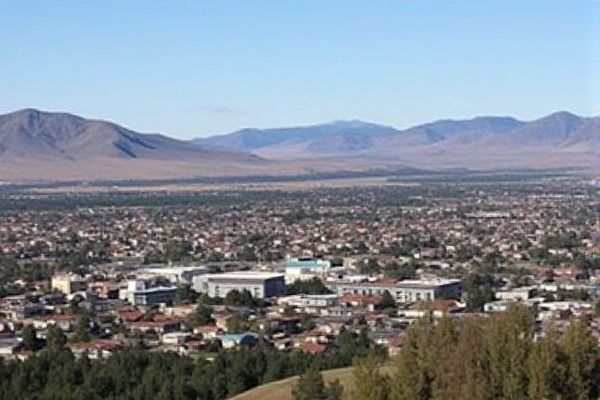
Cost of living in Idaho: Average home prices. Utility costs. Grocery expenses. Healthcare prices. Transportation fees. Property taxes. Rental rates. Education tuition fees. Entertainment expenses. Income tax rate.
Average home prices
As of August 2024, the housing market in Idaho demonstrates a dynamic trend, with the median home price standing at approximately $481,500. This reflects a notable year-over-year increase of about 2.0 to 2.1%. Meanwhile, the average home value in the state is around $454,300. In contrast, other reports indicate that Idaho home prices average $451,298, which marks a 1.5% increase from the previous year. The forecasts for different cities reveal specific trends, such as a projected 3.7% increase in Boise, speaking to the diverse dynamics at play across the state.
Utility costs
In Idaho, utility costs for electricity are relatively low, with residential customers of Idaho Falls Power paying $0.0715 per kWh and a $23 monthly service charge, resulting in a total bill of $94.50 for 1,000 kWh usage. Idaho overall has the third-lowest average electricity price in the country, largely due to the significant use of inexpensive hydropower. For more detailed information, you can visit the Idaho Falls Power website, which provides insights into account management, service options, and the policies affecting these competitive rates.
Grocery expenses
In Idaho, grocery expenses are relatively affordable, with food costs being 6% less than the national average, and Idahoans spending about $3,200 to $3,600 per year on groceries. Additionally, eating out is inexpensive, with the average price of a dish at a restaurant being $9.98 and annual dining out expenses $935 less than the national average. For more in-depth information, you can explore this overview of the Cost of Living in Idaho, providing valuable insights into how locals manage their expenses efficiently.
Healthcare prices
Healthcare services in Idaho, such as doctor check-ups and dentistry, cost 1% lower than the national average, contributing to the overall lower cost of living in the state. For a detailed comparison and to explore more about living expenses in different areas, you can visit the Cost of Living Calculator. This tool offers insights into how Idaho's affordable healthcare impacts the financial landscape, making it a desirable place to live for those seeking economical healthcare solutions.
Transportation fees
Transportation costs in Idaho, encompassing both gas prices and vehicle maintenance, present a substantial financial consideration for residents. A single adult can anticipate spending approximately $5,300 on these expenses each year. Typically, gas prices in the state are in line with or slightly exceed the national average, which can place additional financial demands on households. For further insight into expenses in Idaho, visit the Cost of Living in Idaho to better understand the broader financial implications for residents.
Property taxes
In Idaho, the average effective property tax rate is 0.47%, and homeowners may qualify for various tax reductions. These reductions include a property tax cut of up to $1,500 for eligible residents, such as those who are 65 or older, blind, widowed, or living with a disability. For more detailed information on these opportunities, you can visit the Kiplinger website to explore the variety of tax options available for Idaho residents.
Rental rates
The median rent in Idaho currently stands at $1,750, marking a year-over-year decrease of $50. This significant disparity in rental prices is evident, with values ranging from as low as $250 to as high as $38,000. Notably, the Median Rent in Idaho is 18% lower compared to the national median, reflecting the state's more affordable rental market. This variance provides potential renters with a wide array of options depending on their budget and lifestyle preferences, thereby making Idaho a potentially attractive location for both short-term and long-term living arrangements.
Education tuition fees
In Idaho, education tuition and fees for the 2024-25 academic year are increasing by 3% for in-state undergraduates, with costs ranging from $7,610 at Lewis-Clark State College to $9,084 at the University of Idaho. Graduate and out-of-state student tuition also saw increases, reflecting the state's ongoing efforts to manage rising operating costs. For a deeper understanding of the implications, you can visit the Idaho Education News website. These adjustments highlight the financial challenges facing higher education institutions as they strive to balance quality education with affordability.
Entertainment expenses
In Idaho Falls, entertainment expenses are relatively affordable, with options such as museum admissions at places like the Museum of Idaho, outdoor activities like visiting the Idaho Falls Japanese Pavilion, and dining out at various price points. From fast food meals to mid-range restaurants, and even fine dining establishments, there are catering options for every budget. For more details on expenses and lifestyle, you can explore the Complete Guide on Idaho Falls Cost of Living which provides a comprehensive overview of the area's affordability.
Income tax rate
Idaho has implemented a flat income tax rate of 5.8% on taxable income, effective from January 1, 2023. However, this rate is scheduled for a reduction to 5.695% retroactively beginning January 1, 2024. For more detailed information, you can visit the Idaho Tax Commission's Online Guide, which provides comprehensive guidance on individual income tax regulations and changes.
